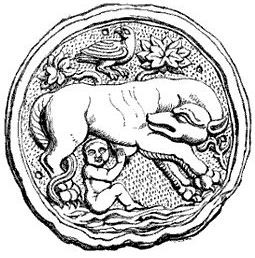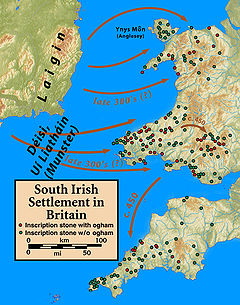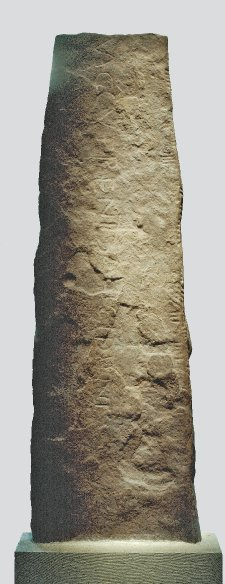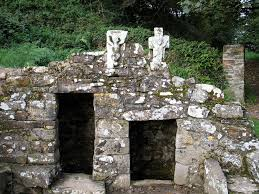
Origins
The term Déise or Déisi derived from the word ‘déis’, which meant ‘vassal’, or ‘subject-people’ in Old Irish. It has been suggested that the Déise were the descendants of some of the earliest settlers in Ireland and were as a result, excluded from the major kingships, and thus took on the status of a subject people.
According to their own origin legend, ‘Tairired na nDésse’ (The wandering of the Déisi) from the Book of Leinster, the Déise originally lived near Tara, and were expelled from there, perhaps in the third century. According to the legend, a Déise princess was abducted by Cellach, the son of Cormac Mac Airt the king of Tara, in revenge for which her uncle, Óengus Gaibuaifneach killed Cellach and blinded Cormac Mac Airt in one eye. As a result, the Déise were expelled from Tara, and wandered through Leinster for a number of years. One branch crossed the Irish Sea and colonised Dyfed in south Wales. Those remaining in Ireland eventually formed an alliance with Oengus Mac Nadfriach, the Eóganacht king of Cashel, expelled the Osraige from the plain of Cashel, and drove them into modern county Kilkenny, (Ossary). The Déise subsequently settled in south Munster.

The territory of the Déise originally stretched from the Waterford coast in a broad belt through south Tipperary and Limerick. They probably maintained a broad political and dynastic unity until the eighth century. From about that time, they split into two groups, the Déise Muman in modern county Waterford and in the baronies of Iffa and Offa in south Tipperary, and the Déise Tuascirt in east Limerick from whom the Dál gCais, and eventually Brian Boru descended. In spite of managing to carve out a territory in Waterford and south Tipperary, the Déise Muman never seemed to have lost their ‘vassal’ status and displace the powerful Eóganacht, the hereditary rulers of Munster. According to the historian Canon Power, the land of the Déise was ruled, from its conquest up to the arrival of the Anglo Normans by the chieftain or regional king of the Déise, who, in later times, was usually, if not always, an O’Phelan. Even in the early thirteenth century, the O’Phelans were still referred to in the Annals of the Four Masters as ‘tighearna na nDiisi Mumhan’ (lords of the Déise of Munster).
Welsh Connection

It has been suggested from the writings of St. Patrick that the search for slaves in Ireland encouraged the early raiding into Wales. However, apart from the raiding by Irish marauders, there have been two important Irish settlements in Wales in historic times; in north Wales, in the Llyn peninsula, perhaps derived from the Irish ‘Laigin’ (Leinster), and further south in Dyfed there is extensive evidence of Irish settlement, especially in the area between Pembroke and the Gower peninsula.

The historian Wendy Davies suggests that the re-fortification of coastal fortsn such as Caernarfon and Cardiff was undertaken in response to Irish raids inn the fourth century. When Magnus Maximus left Britain in 388 AD the Romann garrison in Caernarfon was probably much reduced, making it easier forn raids to turn into settlement. In south Wales especially, this is portrayed as an ‘tribal migration’ of the Déise headed by their own king and tying in with then Déise expulsion myth in Ireland. Subsequently, there is evidence of a directn line of Irish rulers in Welsh Dyfed into the eighth century.
Physical evidence of the Irish presence in the south Wales area comes in then form of Ogham stones. In county Waterford there are forty Ogham stones andn these can be dated to the end of the pre-Christian and beginning of then Christian era, testimony of the arrival of the use of Latin into Ireland. In Wales,n the bulk of the Ogham stones occur in Pembrokeshire; significantly the arean of the settlement of the Déise. The discovery of these Ogham stones in Wales,n with both inscriptions in Irish and Latin point to a living Irish language in southwest Wales during this period.
The Déise and Christianity
It seems probable that Christianity came to the Déise in the Waterford area from the European Continent and from Wales before St. Patrick. According to tradition, St. Declan was regarded as the Apostle of the Déise. Even in the twelfth-century Life of Declan, his cult was still being used to preserve some form of Déise independence, in this case emphasising the claims of Ardmore to continuing as a separate diocese. According to the legend in the Life of Declan, St. Patrick had ordained that ‘Declán Pátraic na nDéisi, na Déisi ag Declán go bráth’, meaning that the Declan was the ‘Patrick’ i.e. the Apostle of the Déise, and that the Déise people should have their own diocese for ever.
Declan was born in Dromroe, near Cappoquin. Again according to tradition, he was trained by a priest named Colmán, which seems to indicate that Christianity was present in the area even before Declan’s activities. It is also significant that he was supposed to have spent time in Wales. One of his followers, Mochoróg was also Welsh. According to Canon Power, Declan was portrayed as a contemporary of St. David of Wales; an attempt by the Déise tribal historiographer to call attention to the links which bound the separated branches of the Déise.

.


